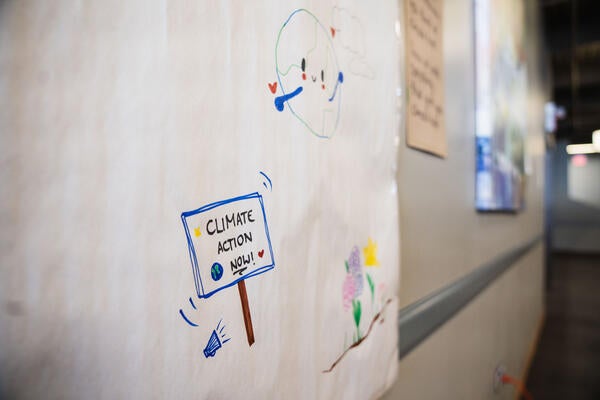
Model of Antarctica’s water enhances sea level forecasts
Study is the first to interpret subglacial hydrology for whole continent, improving analysis of Antarctic ice melt

Study is the first to interpret subglacial hydrology for whole continent, improving analysis of Antarctic ice melt
By Media RelationsResearchers have generated the first dataset of water flow beneath the entire Antarctic Ice Sheet, which will lead to more accurate projections of sea level rise.
The team from the University of Waterloo modeled Antarctica’s subglacial environment. The dataset represents the researchers’ best approximation of what the water flow underneath the ice sheet might currently look like. The results include numerous subglacial lakes developing below ice streams in both East and West Antarctica, and an extensive network of subglacial water channels that discharge large fluxes of water under many major glaciers.
The model calculates how fast subglacial water is flowing and where it accumulates below the ice. It will significantly enhance the scientific community’s ability to accurately predict sea level rise from climate change.
“Sea level rise will have negative consequences for us all,” said Dr. Shivani Ehrenfeucht, post-doctoral fellow in the Faculty of Environment. “It is important for projections of sea level rise to be as accurate as possible so that policy makers and stakeholders can plan and adapt while we as a society strive to reach zero emissions as quickly as possible.”
Before this continent-wide representation of the Antarctic subglacial environment, scientists had to estimate the water’s impact, but often this important factor would not be part of projections.
“The water layer between the ice sheet and the bedrock is either entirely ignored in projections of sea level rise or modelers have to make an approximation as to what this layer should look like,” said Dr. Christine Dow, professor in the Faculty of Environment and Canada Research Chair in Glacial Hydrology and Ice Dynamics. “Now we’ve provided the dataset as a product so there’s no excuse anymore for not including this really important aspect of ice behaviour.”
Studies that include this water layer in their models of glacier flow end up predicting much higher degrees of glacier melt and mass loss by the end of the century.
At nearly 14 million square kilometres, the Antarctic Ice Sheet covers nearly all of the continent and is nearly one and a half times the size of Canada.
The study, Antarctic wide subglacial hydrology modeling, appears in Geophysical Research Letters.

Thwaites Glacier, West Antarctica. (Credit: NASA)
Read more
Satellite data provides first evidence of ocean water intrusion beneath Antarctica’s Thwaites Glacier

Canada's coasts face increasing flooding and erosion with climate change.
Read more
Canada must act to protect the longest marine and freshwater coastlines in the world from the surge of climate change

Read more
Waterloo researchers are helping shape the next global scientific assessment that will guide world leaders from climate promises to action
The University of Waterloo acknowledges that much of our work takes place on the traditional territory of the Neutral, Anishinaabeg, and Haudenosaunee peoples. Our main campus is situated on the Haldimand Tract, the land granted to the Six Nations that includes six miles on each side of the Grand River. Our active work toward reconciliation takes place across our campuses through research, learning, teaching, and community building, and is co-ordinated within the Office of Indigenous Relations.